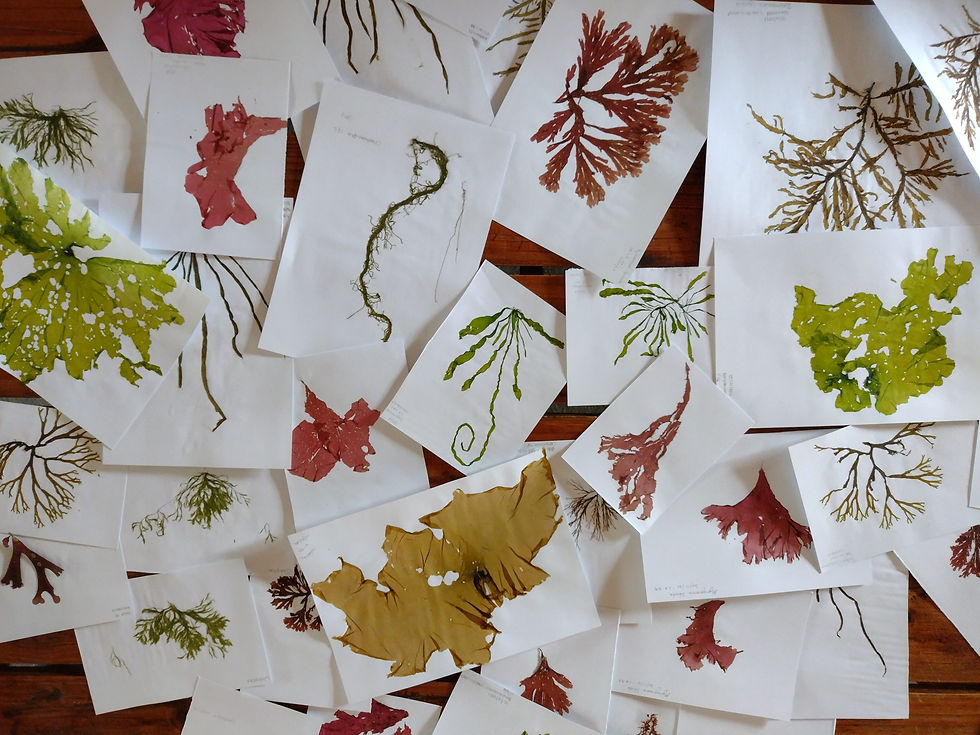Ten Things That Will Change How You See Kelp
- Danel Wentzel
- Aug 13
- 3 min read
It’s easy to think of kelp forests as just another patch of seaweed, but as a marine biologist I can tell you, they are vibrant, breathing cities beneath the waves. My home in Cape Town is blessed with these magical underwater jungles, and I’ve spent countless hours diving amongst their towering fronds, discovering their secrets.

I recently came across a fantastic piece from Mission Blue about the importance of these ecosystems, and it got me thinking. Here are a few things that will change the way you see these underwater forests forever:
The Ocean’s Most Prolific Ecosystem
They are the largest habitat on Earth.
Kelp forests aren't just a local wonder; they're the biggest marine habitat on the planet, stretching across over a third of the world's coastlines. From the chilly waters of Norway to the vibrant coast of South Africa, these forests connect continents.

Distribution of common kelp genera around the world | UNEP / GRID-Arenal Kelp are not plants.
This is a common misconception! Kelp are actually a type of large brown algae. They don’t have roots to absorb nutrients from the soil; instead, they draw everything they need from the water through their "fronds."

Tiny blades of kelp are referred to as "fronds" They are champion growers.
Giant kelp (Macrocystis pyrifera) is reported to grow up to 18 inches (45 centimeters) in a single day, making them the second fastest-growing organisms on the planet, just behind certain species of tropical bamboo. Under the right conditions, canopy-forming kelps like giant kelp can reach towering heights of over 150 feet (45 meters), stretching from the seafloor all the way to the surface. Their rapid growth fuels the incredible productivity of kelp forests and supports the diverse life that depends on them.
A small patch of giant kelp growing in Cape Town
They are a nursery for life.
These forests are a bustling metropolis for marine life. The dense canopy and towering stalks provide a safe haven and a rich food source for hundreds of species, acting as a nursery where young fish, sharks, and countless other creatures can thrive. Some animals depend on kelp directly for survival, while others rely on the structure it creates for feeding, breeding, and protection from predators.
An Unexpected Part of Our Lives
They inspire us every day.
From the local communities who have lived alongside them for centuries to the artists and photographers who capture their ethereal beauty, kelp forests are a constant source of wonder and inspiration.

Seaweed pressings to document the biodiversity of Argentina’s kelp forests | Image: Candelaria Piemonte. You’ve probably eaten them.
Kelp isn't just a superfood! Its derivatives, called alginates, are used as thickening agents in everything from ice cream and toothpaste to cosmetics. It’s in your home, and you probably don't even know it.

They protect our coasts.
By absorbing the energy of waves, kelp forests act as a natural buffer, protecting our shorelines from erosion. It’s a gentle but powerful defense system that keeps our coastal homes and habitats safe.

The Future of the Forest
They are under threat.
Despite their incredible resilience, kelp forests are now facing one of their greatest challenges: climate change. Rising ocean temperatures and marine heatwaves are causing them to disappear at an alarming rate, threatening the entire ecosystem that depends on them.
There's hope.
Organisations like Mission Blue are working tirelessly to protect and restore these critical habitats. By supporting kelp initiatives, fighting climate change, and raising awareness, we can all play a part in preserving these breathtaking underwater worlds for generations to come.

They are a hidden gem.
Despite their global importance, kelp forests often remain hidden beneath the waves—out of sight, and too often, out of mind. It’s up to us to bring their story to the surface.
These forests are not just "underwater forests"—they are the lungs of our oceans. There’s still much to learn—and much to protect. But by recognising the beauty and value of kelp forests, and supporting the people and projects working to sustain them, we can help ensure that these underwater forests continue to thrive for generations to come.
Keen to learn more? Here's some more article by Mission Blue:


















Comments